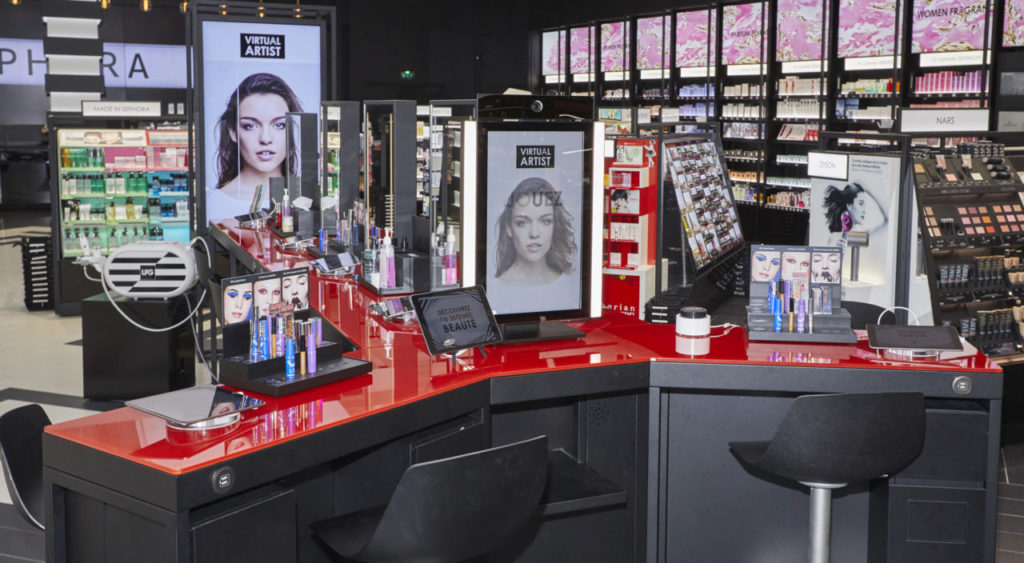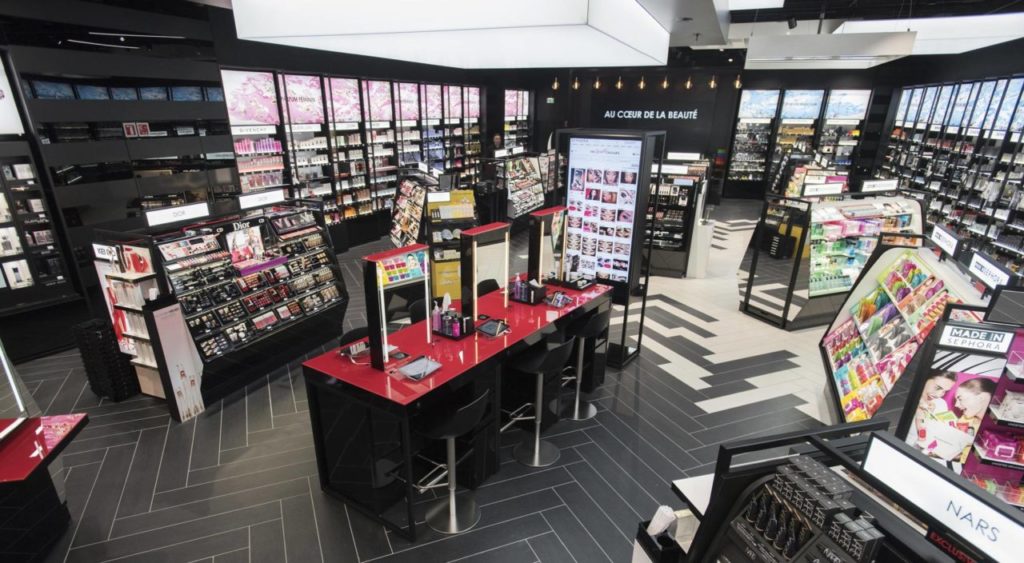Anatomy of the Sephora Retail Experience
Though retail is in a constant state of change (and we’re losing big retailers like Sears), there are plenty of companies innovating in this space. This is part 3 of our “Rebirth of Retail” series. See Part 1 and Part 2.
In this installment, we look at Sephora’s constant reinvention and experimentation in the retail space as a great example of techniques any retailer can use.
Owned by the French luxury conglomerate LVMH, Sephora and has more than two thousand stores all over the world and the retailer has proven itself nothing if not resilient in the face of major upheaval in the retail sector.

Market Segmentation
Walk inside a Sephora store and take a look around, what do you see? A clean, black and white aesthetic, uncluttered aisles, and shoppers of varying demographics trying out their purchases before buying. It may look casual at first glance, but beneath the surface careful attention is being paid to market segmentation: appealing to professionals with clean design and clear organization, to various demographic groups with easy-to-access product, and above all a strategic directive to reach trendy consumer who don’t mind paying a premium price for their makeup, skincare and hair products. In an industry dominated by drugstores on the low end and department stores on the high end, Sephora can be seen as a democratizing influence, so long as you realize the demographic characteristics they cherish are carefully established and catered to by the company.
The takeaway: know your customer and what motivates him or her to purchase with you.
Fragmentation of Influence
The look and feel a Sephora store aligns perfectly with the fragmentation of influence we see all over the retail landscape. So-called “expert” opinions are eschewed for those of friends, YouTube tutorial stars and Instagram influencers. More than that, consumers want to see for themselves, so Sephora goes the extra mile to make their retail environment experiential, including some digital integrations that offer customers recommendations on the perfect shade or scent. Shoppers come to Sephora knowing they can escape the “hard sell” that might have been present in their parents’ retail experience.
The takeaway: encourage sampling of your product whenever and however you can.
State of Play

While there is some brand continuity going on behind the scenes (more on that in a second), Sephora certainly follows the mold of retail experiences like Apple’s where they encourage an environment of “play” in-store. End caps are stocked with disposable wipes, styling products and trashcans, and customers are invited to linger on lunch hours and breaks and spend quality time with the product.
The takeaway: create experiential store experiences where customers can really “see themselves” using your product in a variety of different ways.
Strategic Placement
A significant portion of the floor space (and some of the most valuable real estate) is devoted to LVMH’s brands like Make Up For Ever, Fresh, Benefit, Givenchy, Guerlain and Dior. But it’s a testament to the strategic planning of the parent company that few consumers realize this. Where once retail experiences were austere and branded, Sephora demonstrates that a little diversity isn’t necessarily a bad thing.
The takeaway: don’t be afraid to intersperse your product with other complimentary products to further cement your presence in the lives of your customer.
Turn customers into “ambassadors”
Aligned with their constant experimentation with the line between digital and in-store experiences, Sephora has put a strong push behind their “Beauty Insider Community.” Shoppers are encouraged to create a profile and get answers to their questions and find inspiration from the reviews of other users. By building a community of users who feed off of each others’ insights and experiences, Sephora can also count on this user group to become “brand ambassadors,” working both online and in real life to extend the brand into the consciousness of ever expanding circles of new customers.
The takeaway: provide customers with an online outlet to express ideas, questions and feedback equals a much more engaged consumer.
While constantly innovating and evolving, Sephora is a prime example of how powerful retail still is for brands who are invested reinventing the experience.



